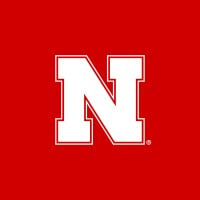
University of Colorado Boulder
As the flagship university of the state of Colorado, CU Boulder is a dynamic community of scholars and learners situated on one of the most spectacular college campuses in the country.



As the flagship university of the state of Colorado, CU Boulder is a dynamic community of scholars and learners situated on one of the most spectacular college campuses in the country.

The University of Nebraska-Lincoln is the state’s flagship university and the intellectual center of the state of Nebraska. Like the university’s founders in 1869, students and faculty at Nebraska look challenges and opportunities in the eye, using fresh thinking and creativity to forge new paths. Our state’s expansive geography fosters a closeness and collaboration that makes way for solutions applied at home and around the world. This includes innovative public-private partnerships and a new research campus – Nebraska Innovation Campus – where business partners connect with faculty talent to transform ideas into innovations. Nebraska continues to grow in size and prominence. It welcomed its largest and most diverse incoming class in 2017 and ranked in the Top 10 of Springer Nature’s international list of Rising Stars in scientific research in 2016. The university has more than 26,000 students and more than 150 undergraduate and 135 graduate degree programs and is ranked as a best-value university by The Princeton Review, and the Fiske Guide to Colleges has repeatedly singled out the university for its academic strength and affordability. A top-tier research institution and member of the Big Ten Academic Alliance, Nebraska is a leader among the Association of Public and Land-grant Universities and is accredited by the Higher Learning Commission of the North Central Association of Colleges and Schools. As a pioneer in teaching and research, Nebraska leads an array of projects aimed at broadening knowledge and bettering lives around the world. In 2017, the Milken Institute ranked the university among the nation’s elite for its ability to drive economic growth by commercializing the work of its faculty. Optimism abounds at Nebraska, creating a spirit that breaks through conventions and tells the world that we are in the middle of everywhere. Community Guidelines: go.unl.edu/smcg
Security & Compliance Standards Overview












No incidents recorded for University of Colorado Boulder in 2025.
No incidents recorded for University of Nebraska-Lincoln in 2025.
University of Colorado Boulder cyber incidents detection timeline including parent company and subsidiaries
University of Nebraska-Lincoln cyber incidents detection timeline including parent company and subsidiaries
Last 3 Security & Risk Events by Company
Angular is a development platform for building mobile and desktop web applications using TypeScript/JavaScript and other languages. Prior to versions 19.2.16, 20.3.14, and 21.0.1, there is a XSRF token leakage via protocol-relative URLs in angular HTTP clients. The vulnerability is a Credential Leak by App Logic that leads to the unauthorized disclosure of the Cross-Site Request Forgery (XSRF) token to an attacker-controlled domain. Angular's HttpClient has a built-in XSRF protection mechanism that works by checking if a request URL starts with a protocol (http:// or https://) to determine if it is cross-origin. If the URL starts with protocol-relative URL (//), it is incorrectly treated as a same-origin request, and the XSRF token is automatically added to the X-XSRF-TOKEN header. This issue has been patched in versions 19.2.16, 20.3.14, and 21.0.1. A workaround for this issue involves avoiding using protocol-relative URLs (URLs starting with //) in HttpClient requests. All backend communication URLs should be hardcoded as relative paths (starting with a single /) or fully qualified, trusted absolute URLs.
Forge (also called `node-forge`) is a native implementation of Transport Layer Security in JavaScript. An Uncontrolled Recursion vulnerability in node-forge versions 1.3.1 and below enables remote, unauthenticated attackers to craft deep ASN.1 structures that trigger unbounded recursive parsing. This leads to a Denial-of-Service (DoS) via stack exhaustion when parsing untrusted DER inputs. This issue has been patched in version 1.3.2.
Forge (also called `node-forge`) is a native implementation of Transport Layer Security in JavaScript. An Integer Overflow vulnerability in node-forge versions 1.3.1 and below enables remote, unauthenticated attackers to craft ASN.1 structures containing OIDs with oversized arcs. These arcs may be decoded as smaller, trusted OIDs due to 32-bit bitwise truncation, enabling the bypass of downstream OID-based security decisions. This issue has been patched in version 1.3.2.
Suricata is a network IDS, IPS and NSM engine developed by the OISF (Open Information Security Foundation) and the Suricata community. Prior to versions 7.0.13 and 8.0.2, working with large buffers in Lua scripts can lead to a stack overflow. Users of Lua rules and output scripts may be affected when working with large buffers. This includes a rule passing a large buffer to a Lua script. This issue has been patched in versions 7.0.13 and 8.0.2. A workaround for this issue involves disabling Lua rules and output scripts, or making sure limits, such as stream.depth.reassembly and HTTP response body limits (response-body-limit), are set to less than half the stack size.
Suricata is a network IDS, IPS and NSM engine developed by the OISF (Open Information Security Foundation) and the Suricata community. In versions from 8.0.0 to before 8.0.2, a NULL dereference can occur when the entropy keyword is used in conjunction with base64_data. This issue has been patched in version 8.0.2. A workaround involves disabling rules that use entropy in conjunction with base64_data.